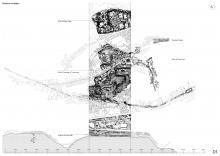
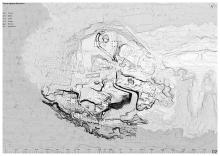
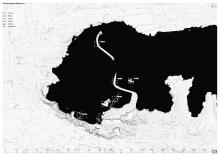
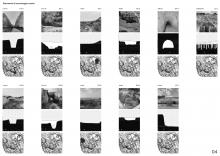
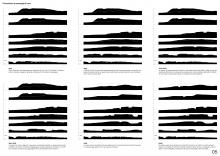
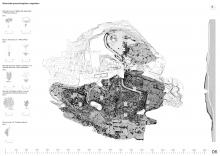
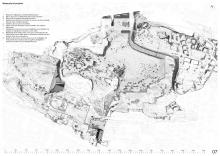
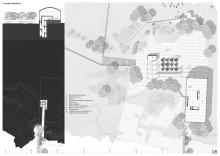
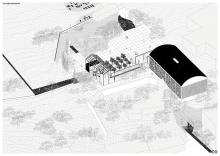
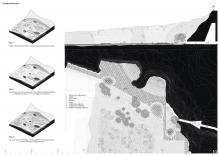
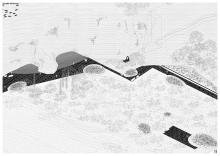
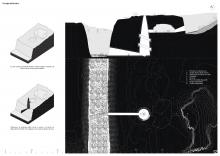
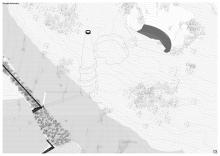
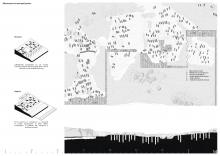
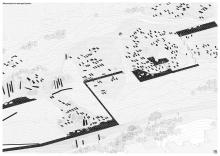

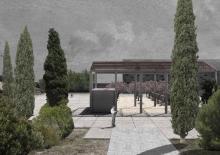
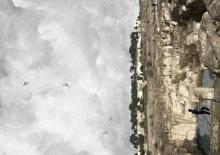
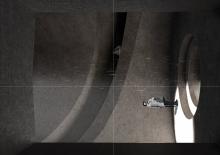
The hills of Tuvixeddu and Tuvumannu form a vast urban void that reflects a layered history of land transformations tied to burial practices and quarrying activities, which have shaped a deeply marked landscape. In the last century, soil exploitation played a crucial role in their exclusion from the urban context and in the loss of their centrality.
Yet these very processes contributed to the formation of a new morphology, marked by a complex interplay of epigeal and hypogeal forms, each relating to the territory through its spatial scale and generating distinct types of space. These elements now define the new outlines of the hill and stand as unique and recognizable features of the contemporary landscape. Understanding them is essential to reestablish a genuine connection with the place.
This seemingly devastated environment has gained a distinctive character through this “morphological evolution,” and still retains a strong identity. The voids become an expressive tool within the project, giving meaning and value to the solids—that is, what remains.
The project aims to rediscover the genius loci by allowing these forms to emerge, while highlighting and completing the topography that defines them. By engaging with specific and singular places, the project seeks to express the site’s authenticity and formal diversity, animating the cavities through symbolic interpretation and re-rooting itself in the ground, working in dialogue with the enduring elements of the landscape: rock and water.








